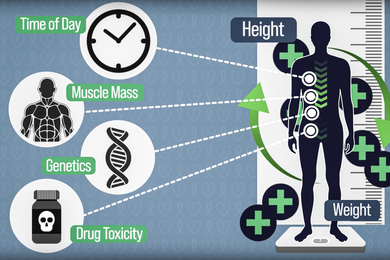Now this longstanding problem has finally been licked, Varanasi says, in research he conducted with graduate student Adam Paxson that is described this week in the journal Nature Communications. They achieved the feat using a modified version of a scanning electron microscope in which the dynamic behavior of droplets on surfaces at any angle could be observed in action at high resolution.
Previous attempts to study droplet adhesion have been static — using drops of a polymer that are allowed to harden and then sliced in cross-section — or have been done only at very low resolution. The ability to observe the process in close-up detail and in full motion is an unprecedented feat, says Varanasi, the Doherty Associate Professor of Ocean Utilization.
Normally, scanning electron microscopes observe materials on a fixed horizontal stage and under a strong vacuum, which causes water to evaporate instantly. The MIT team was able to adapt the equipment to operate with a weaker vacuum, and with the ability to change the surface angle and to push and pull droplets across the surface with a tiny wire.
Paxson and Varanasi found that a key factor in determining whether a droplet sticks to the surface is the angle of the droplet’s leading and trailing edges relative to the surface. Nobody had been able to observe these angles dynamically at microscale before, while theorists had not predicted their importance.
The MIT researchers also found that on rough surfaces, surface texture is crucial to adhesion. Surprisingly, they found that too much roughness can make droplets stick more — contrary to the widely held belief that greater roughness always improves a surface’s ability to shed water. It all depends on the details of the texture, they found.
For many applications, it’s important that droplets fall away from a condensing surface as quickly as possible; for others, it’s best to “pin” them in place as long as possible so they can grow and spread. The new analysis, which led to a mathematical system for precisely predicting droplet behavior, can be used to optimize a surface in either way. (Bubbles, such as those on the bottom of a pan of boiling water, behave in essentially the same way).
“People have only been able to make sketches” of how droplet adhesion works, Paxson says. With the new high-resolution imagery, it is now clear that as a droplet peels away from a rough surface, the round droplet forms a series of tiny “necks” adhering to each of the high points on the surface; these necks (which the researchers call “capillary bridges”) then gradually stretch, thin and break. The more high spots on the surface, the more of these tiny necks form. “That’s where all the adhesion occurs,” Paxson says.
The MIT authors say the phenomenon is “self-similar,” like fractal structure: Each neck or capillary bridge can consist of several capillary bridges at finer length scales; it is the cumulative effect that dictates the overall adhesion. This self-similarity is exploited by some biological structures for lowering adhesion.
There had been two leading theories on how to calculate the adhesion of droplets: One held that the areas of contact and energy levels of the molecules were key; the other, that the length of the edge of a drop on a surface was critical. The evidence produced by this research strongly supports the second theory. “I think we have now closed a decades-old debate on this one,” Varanasi says.
In general, Paxson says, “complicated shapes tend to be more sticky,” because of their greater edge-length.
Droplets and bubbles are ubiquitous in many engineering applications. This work could be applied to engineering industrial surfaces with controlled adhesion in applications ranging from large desalination and power plants to consumer products such as fabrics, packaging and medical devices. While some applications, such as condensers, strive to shed droplets quickly from a surface, others — such as ink droplets sprayed onto paper in an inkjet printer — require the reverse. The new methodology might help in improving both functions, the researchers say.
Paxson and Varanasi’s formulas can also explain variability among natural textured surfaces — such as lotus leaves, which shed water efficiently, and rose petals, which do not. Finally, the new research could advance our understanding of certain biological processes — such as how water spiders, which make an air bubble to house themselves under the surface of a body of water, control the surface tension to penetrate the bubble.
Neelesh Patankar, a professor of mechanical engineering at Northwestern University who was not involved in the work, says, “Theoretical hypotheses … had been proposed, but they had not been directly tested using experiments. This work is remarkable in that it provides direct observation of the dynamic behavior. … The verdict on the de-pinning mechanism is now clear, thanks to this work.”
The work was supported by the National Science Foundation and the DuPont-MIT Alliance.







